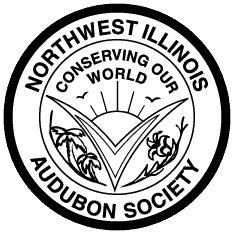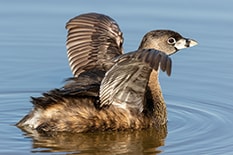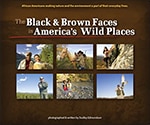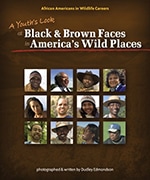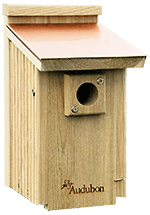
March Family Activities
Want to attract the bluebird?
Build it and they will come! Building bluebird nest boxes is a great way to help conserve birds at the local level. Boxes are readily available at most home improvement stores or you can check out lots of nest plans at www.birdwatching-bliss.com and build it yourself.
To make it more successful, remember:
- Limit pesticide use; bluebirds diet consists of insects which can be affected by pesticides.
- No perch! Perches encourage predators and the birds don’t need them.
- Houses should be put up at the end of February or early March.
- Make sure boxes are 200 yards apart if putting up more than one nesting box.
- Face the box east or northeast, away from prevailing winds.
- Place boxes 4–8 feet high, facing a clearing if possible.
- The North American Bluebird Society has very strict guidelines for monitoring nesting boxes that you should check out.
Some websites have live Eastern Bluebird Webcams so you can watch babies in the nest. Do a search online.
Do you have a preschool-aged child in your life? Teach them this little finger play.
Two little bluebirds
(hold one finger from each hand in front of you)
Sitting on a hill
One named Jack
(wiggle one finger)
One named Jill
(wiggle the other)
Fly away Jack
(put hand behind back)
Fly away Jill
(put other hand behind back)
Come back Jack
(bring one hand back to front with finger up)
Come back Jill
(bring out other hand)
Winter Tree Buds
Explore with your kids the buds of various trees. In February or early March, while buds are still tightly closed, cut off a 12-inch twig from various trees. Use garden shears for a sharp, clean cut and cut at an angle. Never take more than you need.
Fill a jar with water and put in the twigs. Place in a sunny windowsill and change the water every few days.
Check daily and note how the buds begin to swell. Finally, the flower buds will burst open. The leaf buds take a little more time.
Eagle Craft Idea
Try this craft idea with your kids and encourage them to be creative.
Kids can trace their hands and one foot on a brown paper bag. Cut out the tracings and glue or tape them together as shown in the picture below.
Glue some white paper to the head area, find something fun for the black eyes and make a triangle beak out of orange paper and glue on.
Draw some feet out of orange paper and glue those on.
These would be fun to make after the Eagle field trip on Feb. 21st! You could even hang them in a window.
Late Winter Exploration
If there is still snow on the ground, take a trip outside to make snow angels (or snow birds)! Lay down on your back in the snow, then move your arms and legs side to side.
While you make your snow angels, look up at the sky to watch for any birds flying by. In the evening, go outside with your family and you might hear some owls!
Go outside and try to spot the American Woodcock. This is the best time of year to find one! When the American Woodcock flies, it looks like a nerf bullet! While you are trying to find one, you can take a walk and look for animal tracks in the snow.
